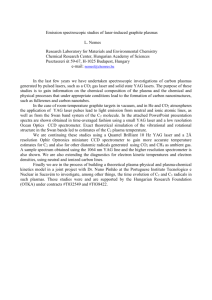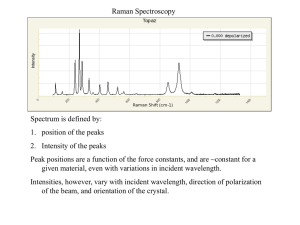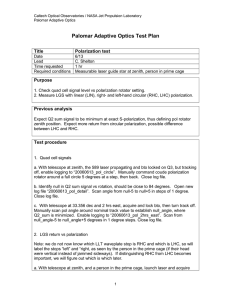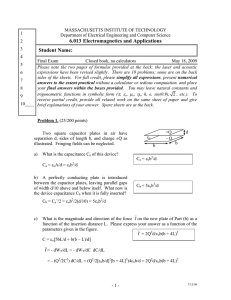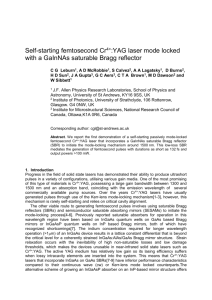AIP00139
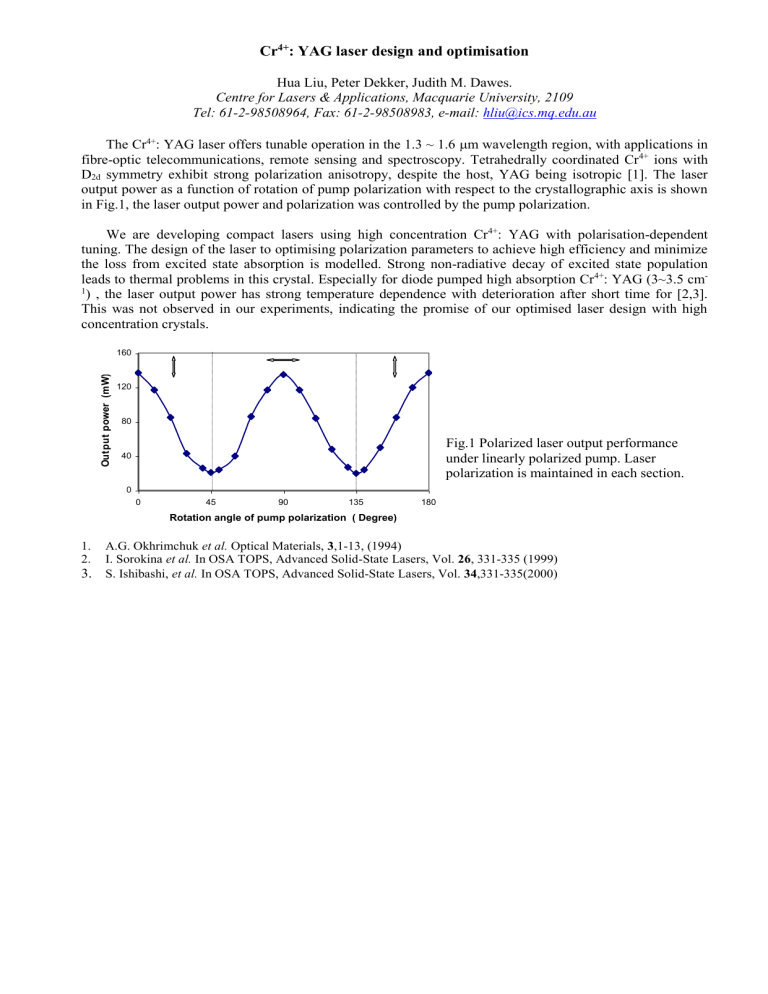
Cr
4+
: YAG laser design and optimisation
Hua Liu, Peter Dekker, Judith M. Dawes.
Centre for Lasers & Applications, Macquarie University, 2109
Tel: 61-2-98508964, Fax: 61-2-98508983, e-mail: hliu@ics.mq.edu.au
The Cr 4+ : YAG laser offers tunable operation in the 1.3 ~ 1.6
m wavelength region, with applications in fibre-optic telecommunications, remote sensing and spectroscopy. Tetrahedrally coordinated Cr 4+ ions with
D
2d
symmetry exhibit strong polarization anisotropy, despite the host, YAG being isotropic [1]. The laser output power as a function of rotation of pump polarization with respect to the crystallographic axis is shown in Fig.1, the laser output power and polarization was controlled by the pump polarization.
We are developing compact lasers using high concentration Cr 4+ : YAG with polarisation-dependent tuning. The design of the laser to optimising polarization parameters to achieve high efficiency and minimize the loss from excited state absorption is modelled. Strong non-radiative decay of excited state population leads to thermal problems in this crystal. Especially for diode pumped high absorption Cr 4+ : YAG (3~3.5 cm -
1 ) , the laser output power has strong temperature dependence with deterioration after short time for [2,3].
This was not observed in our experiments, indicating the promise of our optimised laser design with high concentration crystals.
160
120
80
40
Fig.1 Polarized laser output performance under linearly polarized pump. Laser polarization is maintained in each section.
0
0 45 90 135
Rotation angle of pump polarization ( Degree)
180
1.
A.G. Okhrimchuk et al.
Optical Materials, 3 ,1-13, (1994)
2.
I. Sorokina et al.
In OSA TOPS, Advanced Solid-State Lasers, Vol. 26 , 331-335 (1999)
3.
S. Ishibashi, et al.
In OSA TOPS, Advanced Solid-State Lasers, Vol. 34 ,331-335(2000)
